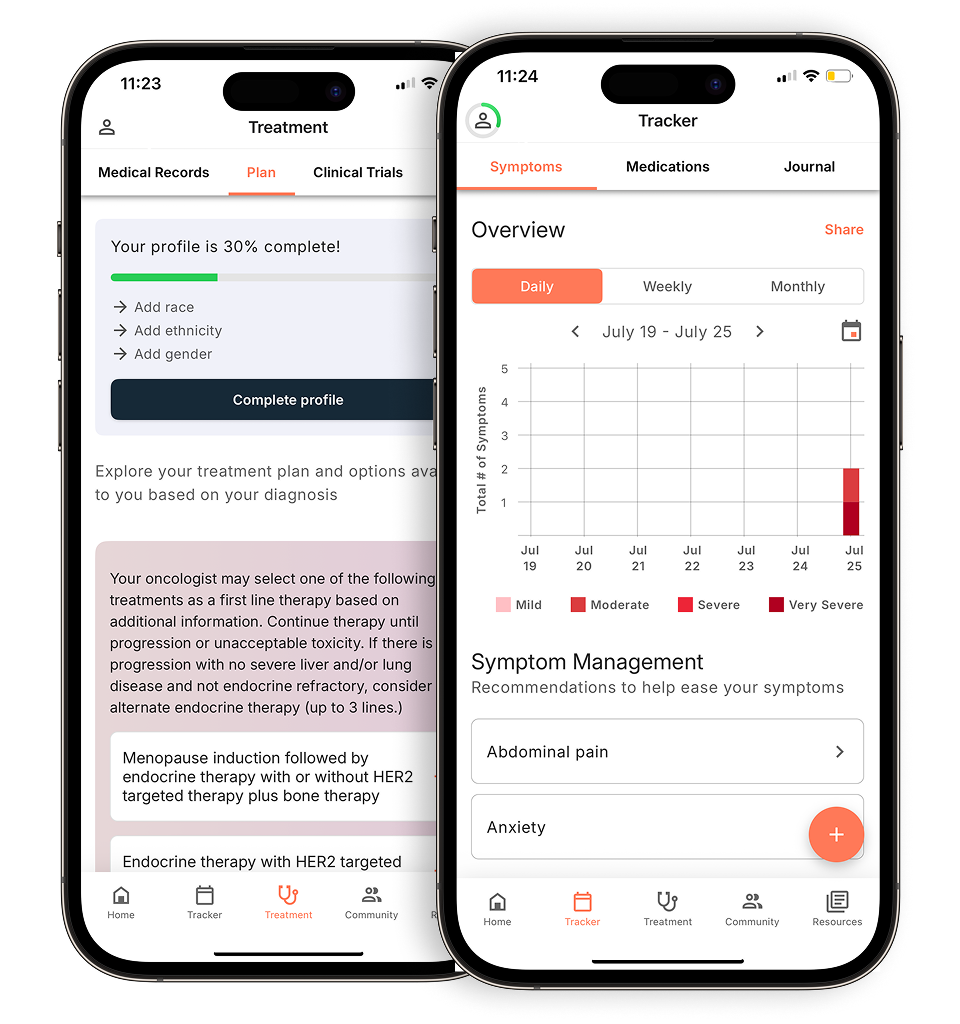Endocrine therapy treatment for early-stage HR+ breast cancer is witnessing significant advances and moving away from the one-size-fits-all approach. Recent trials and genomic assays have paved the way for more tailored and targeted treatments that could improve outcomes for high-risk patients and deescalate treatment recommendations for low and intermediate-risk ones. Let’s delve into the new developments and directions in endocrine therapy, highlighting the practical applications and potential implications for breast cancer patients and those at high risk of developing the disease.
- Tailored treatment durations
Recent data proves that the type and duration of endocrine therapy should be tailored to individual patients based on factors such as tumor stage, nodal involvement, genomic features, and treatment tolerability. The standard of prescribing endocrine therapy for 5 years (low-risk) or 10 years ( high-risk) is becoming more nuanced. Big studies such as GIM-4 and DATA have provided valuable insights into optimal durations of endocrine therapy based on tumor and patient characteristics. One example indicated that a 7-8 year endocrine therapy plan, including 5 years of aromatase inhibitors, can effectively reduce long-term recurrences in patients at intermediate risk while minimizing the side effects that come with continuing on for 10 years. Another finding showed that for premenopausal women with high-risk HR-positive disease, optimal outcomes are achieved with dual endocrine therapy. This involves the combination of ovarian function suppression and aromatase inhibitors, which have been found to provide the best chances for a positive outcome in these patients. - De-escalation of endocrine therapy
A growing body of research focuses on de-escalating endocrine therapy for women with low-risk breast cancer. Using genomic assays, studies are exploring the possibility of shortening the duration, reducing the dosage, or even omitting endocrine therapy altogether in select patients. This approach aims to minimize the potential for over-treatment and associated side effects. Genomic tests like the Breast Cancer Index are now being used to guide decisions on optimal endocrine therapy duration identifying women who do not benefit from more than five years of treatment from those that would benefit significantly from the additional 5 years. And for women with high-risk breast lesions like Atypical Ductal Hyperplasia or Stage 0 DCIS breast cancers, recent studies have shown very low-dose tamoxifen (babytam) regimens to be highly effective in reducing invasive cancer in the future. - Addition of CDK-4/-6 Inhibitors for higher-risk patients
There is now an approved role for adding a CDK-4/-6 inhibitor to adjuvant endocrine therapy in patients with breast cancer with a higher risk of recurrence. This targeted therapy works alongside standard endocrine therapy to help prevent the growth and spread of cancer cells, improving the overall efficacy of treatment.
Balancing treatment efficacy and quality of life
No treatment is without some side effects, and endocrine therapy treatment is no exception. However, the development of risk-customized exposure to therapy has the potential to greatly improve both patient quality of life and patient adherence to the therapy duration as prescribed. The landscape of endocrine therapy for hormone receptor-positive early-stage breast cancer has shifted dramatically in recent years. With a focus on personalized treatment plans, new advancements are providing more effective and targeted options for patients. The future of endocrine therapy promises even greater improvements in patient outcomes and quality of life, as research continues to explore and refine these innovative approaches.
Have questions about your treatment plan? Use the Ask Outcomes4Me feature in our app and our team of oncology nurses will answer.
Personalized support for real care decisions
Understand your diagnosis, explore clinical trials, and track symptoms--all in one place.
Get started
Compare treatments, prepare for appointments, and track side effects—all in the app
Built for your diagnosis, Outcomes4Me gives you the tools to make confident, informed decisions—right when you need them.
Continue in app






